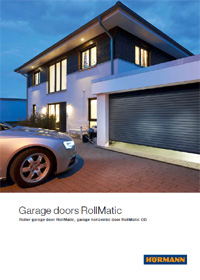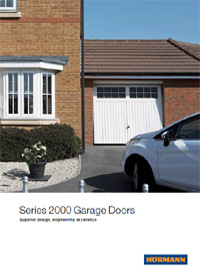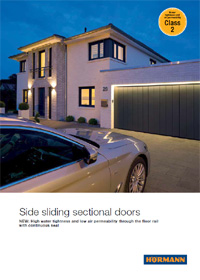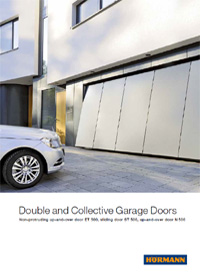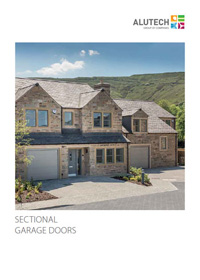Quality, Reliability & Great Value
Garage Doors Letchworth Garden City, Hertfordshire | Garage Door Repair Letchworth Garden City, Hertfordshire | Roller Shutter Garage Doors Letchworth Garden City, Hertfordshire
ACE Garage Doors have many happy customers in the Letchworth Garden City. The town is right on our doorstep as we are based in the neighbouring town of Stevenage. As a matter of interest, the forthcoming film The World's End that was directed by Edgar Wright and starring Simon Pegg and Nick Frost was filmed between September and December 2012 throughout Letchworth and Welwyn Garden Cities. A number of attractions and locations have been filmed, and in most cases the sets were dressed with fictional names. Particular favourites were local pubs from the town that had fictional name plates put over their own just for the filming. So if you live in or around the Letchworth Garden City area and have been toying with the idea of a new garage door recently, why not contact us, we are sure to be able to supply and fit a superb new garage door.
Remember that you won't have to go to the worlds end to find the perfect garage door for your Letchworth Garden City property, simply call ACE Garage Doors for a free, and no obligation quote today.
Letchworth Garden City is steeped in history
The area now occupied by Letchworth Garden City has been inhabited since prehistoric times. A late Bronze Age hill fort, thought to date from around 700 BC, stood on Wilbury Hill, beside the ancient road of Icknield Way. The hill fort was refortified about 400 BC in the Middle Iron Age, and appears to have been occupied until the Roman conquest of Britain. Evidence for Bronze Age, Romano-British and late Iron Age settlement has also been found in the fields between Norton village and the A1.
By the time of the Norman Conquest, Letchworth Garden City was established as a village. The name is derived from the Old English "lycce weorth", meaning a farm inside a fence or enclosure. It appears in the Domesday Book of 1086 as "Leceworde", when it was described as having nine households of villagers, four cottages, one slave and one priest. The presence of the priest suggests that Letchworth was by that time a parish. The Letchworth Garden City parish church was built in the 12th century, but likely on the site of an earlier building. The original dedication of the church is unknown, but it was rededicated to St Mary during the First World War. The village was along Letchworth Lane, stretching from St Mary's and the adjoining medieval manor house of Letchworth Hall up to the staggered crossroads of Letchworth Lane, Hitchin Road, Baldock Road and Spring Road. Letchworth was a relatively small parish, having a population in 1801 of only about sixty seven people, rising to around ninety six by 1901.
The foundation of Letchworth Garden City
In 1898, the social reformer Ebenezer Howard wrote To-morrow: A Peaceful Path to Real Reform in which he advocated the construction of a new kind of town, which he called a "garden city". The idea was summed up in a diagram called the "Three Magnets", showing how the mixed advantages and disadvantages of town or country living could be combined into a third option, "Town-Country", offering the advantages of both cities and the countryside while eliminating their disadvantages. Industry would be kept separate from residential areas, whilst the residents would have good access to parks and the countryside. The garden city would be contained in a belt of open countryside, providing land not just for agriculture, but also for children's homes, asylums, new forests and brickfields. Echoes of this idea of a protected rural belt were later taken up more generally in town planning in Britain from the middle of the twentieth century as the green belt.
Howard's ideas were laughed at in some sections of the press but fortunately struck a chord with many, especially members of the Arts and Crafts movement and the Quakers. After examining several possible locations for establishing a garden city, the garden city pioneers settled on Letchworth as the chosen site. The Letchworth Hall estate had come up for sale, and although it alone was too small, secret negotiations with fourteen adjoining landowners allowed an estate of 3,818 acres to be assembled and purchased for £155,587. A company called First Garden City Limited was established on 1 September 1903 to purchase the land and begin building what would become Letchworth Garden City, the world's first garden city.
In 1904, architects Raymond Unwin and Barry Parker won a competition for designing the Letchworth Garden City layout, and were appointed as consulting architects to the company. Most of the pre-existing trees and hedgerows were preserved in the layout. Unwin took the alignment of the town's main avenue, the Broadway from three old oak trees which stood on the central plateau of the estate and were incorporated into the central square, which became Broadway Gardens.
A temporary railway halt was built in 1903 on the Great Northern Railway's Hitchin, Royston and Cambridge branch line, which crosses the middle of the Letchworth Garden City estate. Initially, services were irregular special trains for excursions and construction workers. A more substantial temporary wooden station was opened in 1905 with a regular passenger service. The current railway station in Letchworth Garden City was built in 1912 in a prominent location at the end of Broadway.
The first new residents for Letchworth Garden City
The first new houses in Letchworth Garden City were occupied in July 1904. The following month First Garden City Limited held a vote amongst shareholders and residents on what name the new garden city should take. Several options were proposed, including "Garden City", "Homeworth" and "Alseopolis". The chosen name was "Letchworth Garden City". The company adopted this as its name for the town, but adoption of the name was not universal. The legal name of the civil parish and urban district remained simply "Letchworth". First Garden City Limited also gradually dropped the "Garden City" suffix from the name, partly reflecting common usage, and partly taking the view that as the town matured it should not permanently be seen as an experiment. Similarly, the town's railway station was initially called "Letchworth Garden City", but was renamed "Letchworth" in 1937. The station is now known as Letchworth Garden City, with direct trains to Brighton via St Pancras International and terminating trains to King's Cross to the South, and Cambridge and King's Lynn to the North.
Ebenezer Howard's wife, Lizzie, died in November 1904 in London, shortly before she had been due to move to a new house in Letchworth Garden City with her husband. As a memorial to her a public hall was built, paid for by public subscriptions. The Mrs Howard Memorial Hall opened in 1906 and was one of Letchworth Garden Cities first public buildings.
Letchworth Garden City starts a new movement in town planning
In 1905, and again in 1907, the company held "Cheap Cottages Exhibitions", which were contests for architects and builders to demonstrate innovations in inexpensive housing. The 1905 exhibition attracted some 60,000 visitors. The popularity of the exhibitions was significant in leading the Daily Mail to launch the Ideal Home Exhibition, in 1908. One possible visitor to the fledgling town was Lenin, who was reputed to have visited during May 1907 whilst attending the Fifth Congress of the Russian Social Democratic Labour Party in London. Contemporary evidence confirming the visit is lacking, but the claim was published in the Daily Mail and the Daily Sketch in November 1916 as part of articles accusing the town of being a haven for communists and conscientious objectors, claims which the town's people denied.
After the success of Letchworth Garden City, land was purchased a little further South and Welwyn Garden City began to take shape. Although the second garden city, Welwyn Garden City has always retained its full name, whereas Letchworth Garden City is more commonly shortened to simply 'Letchworth'.
Letchworth's founding citizens, attracted by the promise of a better life, were often caricatured by outsiders as idealistic and otherworldly. John Betjeman in his poems Group Life: Letchworth and Huxley Hall painted Letchworth people as earnest health freaks. One commonly-cited example of this is the ban, most unusual for a British town, on selling alcohol in public premises. This was initially decided by a public vote in June 1907, in which more than half voted against allowing a licensed public house. This did not stop the town having a "pub" however, the Skittles Inn or the "pub with no beer" opened in March 1907.
Despite the ban it is not entirely true to say that there were no pubs in Letchworth Garden City. Pubs that had existed from before the foundation of the Garden City continued to operate, including the Three Horseshoes in Norton and the Three Horseshoes and the Fox in Willian, and benefited from the lack of alcohol to be had in the centre of the town, as did the pubs in neighbouring Hitchin and Baldock. New inns also sprang up on the borders of the town, including the Wilbury Hotel which opened in 1940 just outside the border of Letchworth Garden City. The ban was finally lifted after a referendum in 1957, which led to the opening of the Broadway Hotel in 1962 as the first public house in the centre of Letchworth Garden City. Several other public houses have opened since then, but to this day the town centre has relatively few pubs for a town of its size.
Allow ACE Garage Doors to lift your Letchworth Garden City property
Take the plunge today and invest in a new garage door from ACE. The different designs, styles, materials and colours will be sure to impress. Don't allow your Letchworth Garden City home to look drab or tatty with an old or dented garage door when you can make a genuine statement in style with one of our top quality garage doors.
We also cover the following areas in Hertfordshire:
- Baldock, Hertfordshire - Garage Doors | Garage Door Repair | Roller Shutter Garage Doors
- Borehamwood, Hertfordshire - Garage Doors | Garage Door Repair | Roller Shutter Garage Doors
- Broxbourne, Hertfordshire - Garage Doors | Garage Door Repair | Roller Shutter Garage Doors
- Elstree, Hertfordshire - Garage Doors | Garage Door Repair | Roller Shutter Garage Doors
- Harpenden, Hertfordshire - Garage Doors | Garage Door Repair | Roller Shutter Garage Doors
- Hertford, Hertfordshire - Garage Doors | Garage Door Repair | Roller Shutter Garage Doors
- Hitchin, Hertfordshire - Garage Doors | Garage Door Repair | Roller Shutter Garage Doors
- Hoddesdon, Hertfordshire - Garage Doors | Garage Door Repair | Roller Shutter Garage Doors
- Potters Bar, Hertfordshire - Garage Doors | Garage Door Repair | Roller Shutter Garage Doors
- Radlett, Hertfordshire - Garage Doors | Garage Door Repair | Roller Shutter Garage Doors
- Rickmansworth, Hertfordshire - Garage Doors | Garage Door Repair | Roller Shutter Garage Doors
- Royston, Hertfordshire - Garage Doors | Garage Door Repair | Roller Shutter Garage Doors
- St. Albans, Hertfordshire - Garage Doors | Garage Door Repair | Roller Shutter Garage Doors
- Stevenage, Hertfordshire - Garage Doors | Garage Door Repair | Roller Shutter Garage Doors
- Waltham Cross, Hertfordshire - Garage Doors | Garage Door Repair | Roller Shutter Garage Doors
- Watford, Hertfordshire - Garage Doors | Garage Door Repair | Roller Shutter Garage Doors
- Welwyn Garden City, Hertfordshire - Garage Doors | Garage Door Repair | Roller Shutter Garage Doors
ACE Garage Doors
For 29 years Ace has been supplying, fitting, servicing and repairing Garage Doors, with thousands of satisfied customers in Hertfordshire and all over the South East. Providing truly excellent customer service means everything to us at ACE Garage Doors, so we put our customers needs at the heart of our business and strive to provide a friendly, prompt and speedy service without compromising on quality or value.
If you are looking for high quality Garage Doors and service you can trust then contact ACE Garage Doors for a QUICK QUOTE today.

Why choose ACE Garage Doors?
- Established 29 years
- Fast and friendly service
- 10 year door guarantee
- 5 year motor guarantee
- No deposit required
- Established brands
- Award winning service

Speed
We aim to respond to enquiries the same day, and provide a rapid quote. If a FREE site survey is required we aim to get to you within 48 hours. We also have a 24/7 repairs service where one of our skilled team will attend to secure your property, or rescue your car!
Customer service
Customer satisfaction is at the forefront of everything we do. We recognise that people lead busy lives, and so we aim to be responsive to enquiries, provide realistic lead-times and do not take any payment until the job is finished and our customers are 100% satisfied.
Quality
Our team has 36 years in the industry and only work with established brands we can set our reputation against, plus
we have no sales people or middle men you will be dealing direct with the owners of the company, Darren and Simon.
Read our story here.
Expertise
ACE Garage Doors offer a full fitting and repair service carried out by our professionally qualified team. From the replacement of individual parts through to a full renovation of your garage, ACE Garage Doors are experts in our field with many years of experience to draw on.
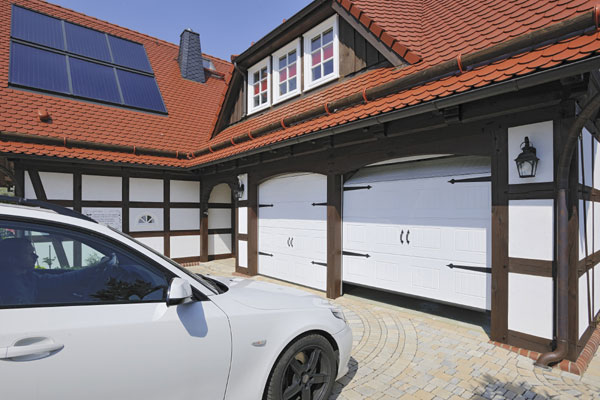
Garage door services
- Extensive range of doors
- All doors fitted by experts
- FREE quotes
- Automated operation
- Full servicing and repairs
- 24/7 call out available

Garage door types
- Electric roller shutters
- Sectional garage doors
- Remote controlled doors
- Insulated garage doors
- Canopy / up & over doors
- Side hinged garage doors
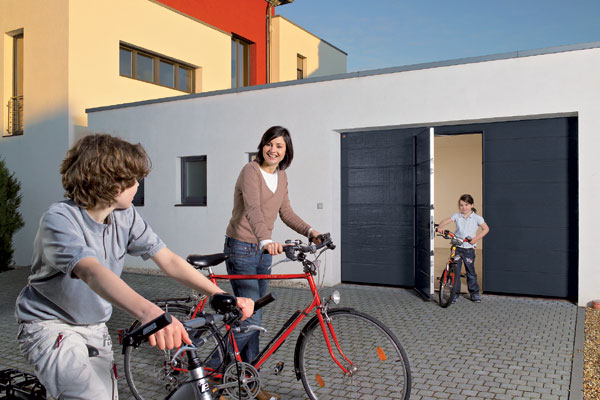
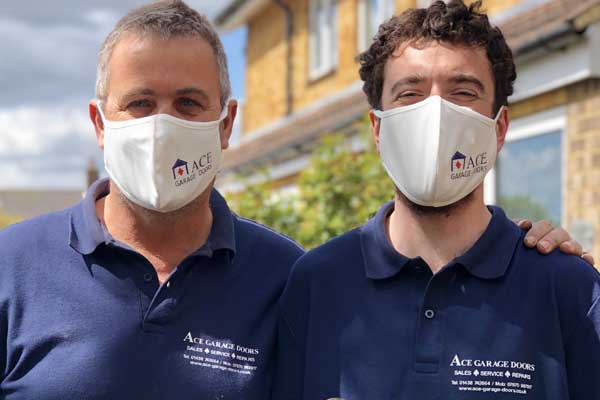
Professional team
- Proud of our reputation
- Fully qualified team
- Over 30 years' experience
- Regularly recommended
- Covid safe services
- Support local football clubs

Areas covered
- Hertfordshire
- Bedfordshire
- Buckinghamshire
- Cambridgeshire
- Essex
- North London
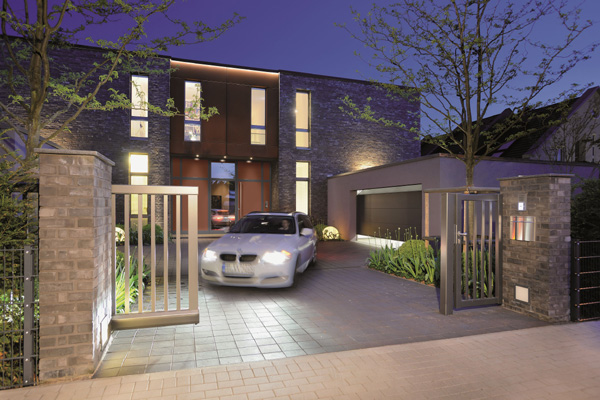
Pricing
We offer extremely competitive pricing by keeping our overheads low, buying in bulk and then passing the savings onto our customers. We have a reputation for providing great value and as a result, we frequently get referred to our customers' families, friends and neighbours.
Industry leading warranties
We offer 10 year warranties for all our up and over and roller doors and frames, and an industry leading 5 year warranties on all our tubular motors, such is our confidence in the quality of our work and components. We also offer 2 year warranties on parts and labour for garage door repairs.
Eco-friendly
As a company we are extremely environmentally aware, and all waste materials, from your old door to the packaging materials for the new product are taken for recycling at our own cost. So by choosing ACE Garage Doors you can be reassured that you are also playing your part to protect the environment.
Easy to follow ordering process
During the FREE SURVEY precise measurements will be taken and your needs matched against a wide range of products from leading manufacturers with whom we deal direct. We will discuss the various materials and finishes available, as well as any optional extra features you might have requested such as glazing and automation.
We can provide doors in almost any colour you can imagine, so provide us with a specific RAL colour or ask us about our colour matching service and we will find it for you! We will inform you of the price fully inclusive of VAT, and if an insurance claim is being made we are happy to provide a written quotation. We don't charge you to take your door away, and it will be recycled for you. Simple.
Selection of garage doors available from ACE Garage Doors
Get a QUICK QUOTE or request more information
If you would like a QUICK QUOTE then please contact us on 01438 742 664 or email us at info@ace-garage-doors.co.uk and we will be in touch shortly.
Further information:
- Sectional Garage Doors in Herts, Beds, Bucks, Essex and North London
- Roller Shutter Garage Doors in Stevenage, Hertfordshire
- Garage Doors in Luton, Bedfordshire
- Garage Doors in Broxbourne, Hertfordshire
- Garage Doors in Epping, Essex
- Garage Door repair in Barnet, London
- Garage Door repair in Biggleswade, Bedfordshire
- Garage Doors in Harpenden, Hertfordshire
- Garage Doors in Hertford, Hertfordshire
- Garage Doors in Hitchin, Hertfordshire
- Garage Doors in Hoddesdon, Hertfordshire
- Hormann Garage Doors in Stevenage, Hertfordshire
- Hormann Sectional Garage Doors in Stevenage, Hertfordshire
- Hormann Sectional Garage Door repair in Stevenage, Hertfordshire
- Hormann Sectional Garage Doors in Stevenage, Hertfordshire
- Garage Doors in Letchworth, Hertfordshire
- Garage Doors in Potters Bar, Hertfordshire
- Garage Doors in Royston, Hertfordshire
- Garage Doors in St Albans, Hertfordshire
- Garage Doors in Welwyn Garden City, Hertfordshire
Hertfordshire
Bedfordshire
Buckinghamshire
Cambridgeshire
Essex
North London
Areas covered :: Articles :: Privacy policy :: Vacancies :: Website map












